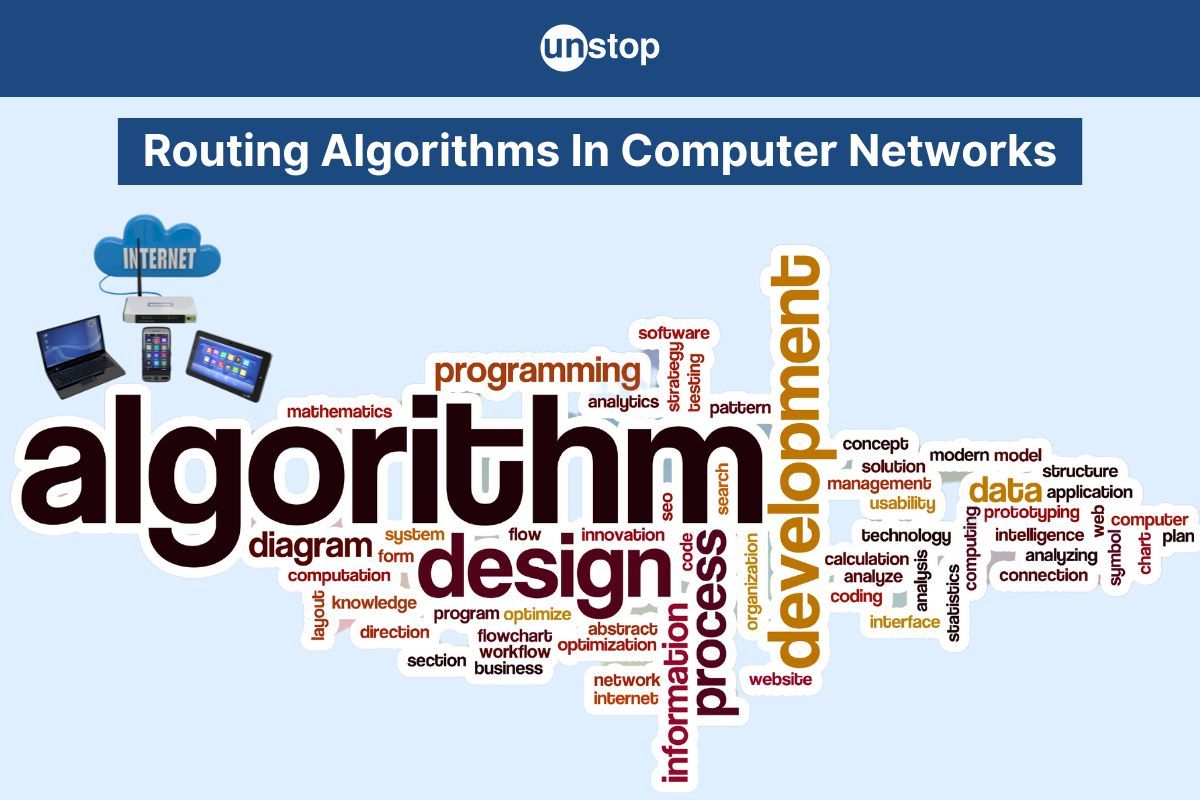- Infosys Interview Questions: Key Points
- Infosys Interview Questions: Technical Round
- Infosys Interview Questions: HR Round
- Recruitment Profiles for Infosys interview
- Eligibility Criteria for Infosys Technical Interview
- Tips to Answer Infosys Interview Questions
- Roadmap To DSA Mastery
- Your DSA Cheat Sheet: Topics You Must Master
- Practice & Interview Prep: Your Road to DSA Mastery
- Interview Prep Resoruces: Master Every Question Like a Pro
- What Is Competitive Programming?
- Benefits Of Competitive Programming
- Competitive Programming Questions
- Basic Operating System Questions
- Intermediate Operating System Questions
- Advanced Operating System Questions
- Conclusion
- Test Your Skills: Quiz Time
- What Is A Computer Network?
- Advantages And Disadvantages Of Computer Network
- Advantages Of Computer Network
- Disadvantages Of Computer Networks
- Applications Of Computer Network
- Best Books For Computer Network
- Frequently Asked Questions (FAQs)
- What is a Gateway in Computer Networks?
- Functions of Gateway in Computer Networks
- Types of Gateways
- Diagram of Gateway in Computer Networks
- Advantages and Disadvantages of Gateway in Computer Networks
- Use Cases of Gateways
- Conclusion
- Frequently Asked Questions
- What Is Flow Control In Computer Networks?
- Stop-and-Wait Method Of Flow Control In Computer Networks
- Sliding Window Method Of Flow Control In Computer Networks
- Purpose of Flow Control In Communication Network
- Conclusion
- Routing Algorithms In Computer Networks
- Classification Of Routing Algorithms
- Adaptive Vs. Non-Adaptive Routing Algorithms
- Static & Dynamic Routing Protocols
- Distance Vector Vs. Link State Routing
- Hybrid Routing Algorithms
- Role Of Routing In Internet Functionality
- Metrics Used In Routing Algorithm Evaluation
- Evolution Of Routing & Its Impact on Networking
- Frequently Asked Questions (FAQs)
- OOPs INTERVIEW QUESTIONS
Routing Algorithms In Computer Networks: Classification & Types

Understanding routing algorithms in computer networks is important for efficient data transmission. These algorithms help find the best paths for data packets to travel through networks.
Exploring these algorithms helps us understand how information moves quickly and accurately in the digital world, making them essential tools in today's networks.
Routing Algorithms In Computer Networks
To begin with, let us study the importance and example of routing algorithms in computer networks:
Importance Of Routing Algorithms
Routing algorithms determine the path data takes within a computer network. These algorithms ensure efficient and reliable data transmission throughout the network. Understanding how routing decisions are made can significantly impact how quickly and accurately data reaches its destination node.
Examples Of Routing Algorithms
One common example is the "shortest path" algorithm, where routers select the most direct route to transmit data from the source to the destination. Another technique is a "random walk," where routers randomly choose paths until reaching the destination node successfully.
Classification Of Routing Algorithms
Let us study how the classification of routing algorithms is done:

Determining The Optimal Path
Routing algorithms in computer networks are categorized based on their method of determining the optimal path. This classification is crucial for grasping each algorithm's unique features and constraints.
By knowing these categories, network admins can choose the best routing algorithm for their network.
Different routing algorithms utilize distinct approaches to find paths within a network.
Common Classifications Based On Protocol
Distance vector algorithms such as RIP (Routing Information Protocol) calculate routes based on the number of hops between nodes without considering other metrics like traffic or speed.
On the other hand, link-state protocols like OSPF (Open Shortest Path First) build an entire map of the network's topology before selecting paths based on various criteria such as available bandwidth.
Adaptive Vs. Non-Adaptive Routing Algorithms
Let us study the differences and similarities between adaptive and non-adaptive routing algorithms:
Adaptive Routing
Adaptive routing algorithms alter paths based on real-time network conditions. They can reroute traffic dynamically, avoiding congested or faulty routes.
For example, an adaptive algorithm can redirect data through a less busy path if a link becomes overloaded. Adaptive routing offers advantages such as improved efficiency and fault tolerance.
These algorithms excel in networks with changing traffic patterns or unreliable links. However, they might be complex to implement and require more processing power.
Non-Adaptive Routing
Non-adaptive routing algorithms use fixed paths regardless of network changes. Once a route is established, it remains unchanged until manually modified by the administrator.
In contrast to adaptive algorithms that adjust to current conditions, non-adaptive ones follow predetermined routes. The disadvantage of non-adaptive routing is its inability to respond promptly to dynamic network situations.
While simpler and easier to manage than adaptive algorithms, they may lead to suboptimal performance during periods of high congestion or failures.
Static & Dynamic Routing Protocols
Let us study the static and dynamic routing protocols:

Static Routing Protocols
Static routing protocols involve manual configuration by network administrators. They require the explicit input of routes into the network devices, making them less adaptable to changes within the network environment.
Static Routing Protocols
-
Pros: Simple setup process, suitable for small networks.
-
Cons: Manual configuration is time-consuming and prone to errors.
Dynamic Routing Protocols
Dynamic routing protocols automatically update routes based on real-time network status information. Dynamic routing protocols like RIP (Routing Information Protocol) or OSPF (Open Shortest Path First) adapt quickly to changes in a network, ensuring efficient data packet delivery without human intervention.
Dynamic Routing Protocols
-
Pros: Automatic updates save time and effort for large networks.
-
Cons: Higher complexity may lead to potential security vulnerabilities.
Distance Vector Vs. Link State Routing
Let us now study the differences and similarities between distance vector and link state routing:
Distance Vector Routing
Distance vector routing relies on hop count to find the best path, measuring distance in network terms. While the distance vector's simplicity lies in hop counts, it can lead to less efficient routes due to not considering other factors.
Pros
-
Simple implementation
-
Low overhead on the network
Cons
-
Slow convergence time
-
Prone to loops in large networks
Link State Routing
When choosing a path, link state routing considers multiple factors like bandwidth, delay, and reliability. Link state's comprehensive analysis of network conditions ensures more optimal paths based on various metrics.
Pros
-
Faster convergence time
-
Scalable for larger networks
Cons
-
Higher resource usage for computation and storage
-
More complex protocol design
The choice between distance vector and link state routing depends on factors such as network size, traffic patterns, reliability requirements, and scalability needs.
Hybrid Routing Algorithms
Let us study the features and benefits of hybrid routing algorithms:
Features Of Hybrid Routing Algorithms
Hybrid routing algorithms blend characteristics of distance vector and link state approaches. They are designed to enhance scalability, efficiency, and fault tolerance within computer networks.
Combining the best aspects of both methods, hybrid routing algorithms aim to provide a robust solution for efficiently routing data packets.
Hybrid routing protocols like EIGRP (Enhanced Interior Gateway Routing Protocol) exemplify this approach by incorporating elements from both distance vector and link state algorithms.
These protocols leverage the advantages of each method to create a more dynamic and adaptable system for managing network traffic effectively.
Benefits Of Hybrid Routing Algorithms
Improved scalability: Hybrid algorithms can easily handle larger networks by utilizing aspects from different paths, such as autonomous systems.
Enhanced efficiency: The combination of features allows for faster convergence times and optimal path selection.
Better fault tolerance: With distributed processing capabilities akin to random walks, these algorithms offer increased resilience against failures.
Role Of Routing In Internet Functionality
Let us study the role of routing in internet functionality:
Efficient Data Packet Delivery
Computer networks rely on routing algorithms to effectively manage internet traffic by selecting the most efficient route for data packets from their origin to the intended recipient. These algorithms are essential for ensuring seamless communication across the web.
By efficiently directing data packets across multiple routers, routing ensures that information reaches its intended recipient accurately and without delays.
Routing is essential for maintaining connectivity between various networks that form the internet.
Global Interconnected Network
The routing algorithms facilitate seamless communication across different regions globally by enabling data transmission between diverse networks.
Without the right path, data could get lost or stuck, causing communication problems and slowing global connections. This link lets people everywhere easily obtain information, talk to others, and do business.
Metrics Used In Routing Algorithm Evaluation
Let us study the metrics used in routing algorithms evaluation:
Key Metrics
Metrics such as latency, bandwidth, reliability, and cost path are crucial in evaluating routing algorithms. These metrics help gauge the efficiency and effectiveness of different algorithms.
Network administrators use these metrics to pick the best routing algorithm for their network. They look at bandwidth and cost to ensure the network runs well and utilizes resources effectively.
Importance Of Evaluation
Evaluating routing algorithms based on these metrics ensures that the chosen algorithm aligns with the network's specific requirements.
For example, an algorithm emphasizing reliable paths would be favoured if a network prioritizes reliability due to critical data transmission.
Evolution Of Routing & Its Impact on Networking
Let us study the evolution of routing algorithms and its impact:
Improved Scalability & Reliability
Routing algorithms in computer networks have evolved significantly to adapt to changing network technologies. This evolution has brought about improvements in scalability, reliability, and performance.
For example, modern protocols like OSPF (Open Shortest Path First) have enhanced the efficiency of routing by calculating the shortest path based on various factors, such as network conditions.
The advancement in routing algorithms has also led to better handling of network traffic through efficient data packet delivery. Networks can now handle more devices without slowing down. They can also adjust routes automatically to make the system more reliable.
Performance Optimization With Modern Protocols
Modern routing protocols, such as BGP (Border Gateway Protocol), are important for improving networking by finding the fastest route for data packets to travel between different systems.
These rules help networks work well by looking at things like link cost and delay. Smart algorithms help routers choose the best path quickly, making data move faster with less delay.
As a result, organizations can achieve seamless connectivity while effectively managing their network resources.
Conclusion
In conclusion, exploring routing algorithms in computer networks sheds light on their intricate nature and pivotal role in network operations. Knowing how routing algorithms work is important for making networks run better. Routing changes have improved modern networks, showing the importance of always improving.
Frequently Asked Questions (FAQs)
1. What are Routing Algorithms in Computer Networks?
Routing algorithms in computer networks are responsible for finding the best route for data packets to move between the sender and receiver. These algorithms are essential for ensuring that data is transmitted efficiently and that the network operates smoothly.
2. How are Routing Algorithms Classified?
Routing algorithms can be classified based on various criteria such as adaptiveness, protocol type (static or dynamic), routing approach (distance vector or link state), and hybrid nature, combining different techniques.
3. What is the Difference Between Adaptive and Non-Adaptive Routing Algorithms?
Adaptive routing algorithms adjust their paths based on changing network conditions, while non-adaptive ones use fixed routes regardless of variations. Adaptive algorithms offer flexibility but may involve more overhead.
4. Can you Explain Static and Dynamic Routing Protocols?
Static protocols use predetermined paths that do not change unless manually modified, which is suitable for small networks. Dynamic protocols automatically adjust routes based on real-time conditions like traffic load, enhancing scalability for larger networks.
5. Why are Metrics Used in Evaluating Routing Algorithms?
Metrics such as throughput, delay, reliability, cost, and scalability help assess the performance of routing algorithms under different scenarios. Evaluating these metrics aids in choosing an algorithm that best suits specific network requirements.
- What is Flow Control in Computer Networks? Understand In Detail
- Top 60+ Networking Interview Questions 2024 (With Answers)
- Programming Language Generations | 1GL To 5GL , Trends & More
- Evolution Of Operating System: Unveiling Generations & Trends
- CPU Scheduling In Operating System: Types Of Algorithm Explained
Instinctively, I fall for nature, music, humor, reading, writing, listening, traveling, observing, learning, unlearning, friendship, exercise, etc., all these from the cradle to the grave- that's ME! It's my irrefutable belief in the uniqueness of all. I'll vehemently defend your right to be your best while I expect the same from you!
Login to continue reading
And access exclusive content, personalized recommendations, and career-boosting opportunities.
Subscribe
to our newsletter
















Comments
Add comment